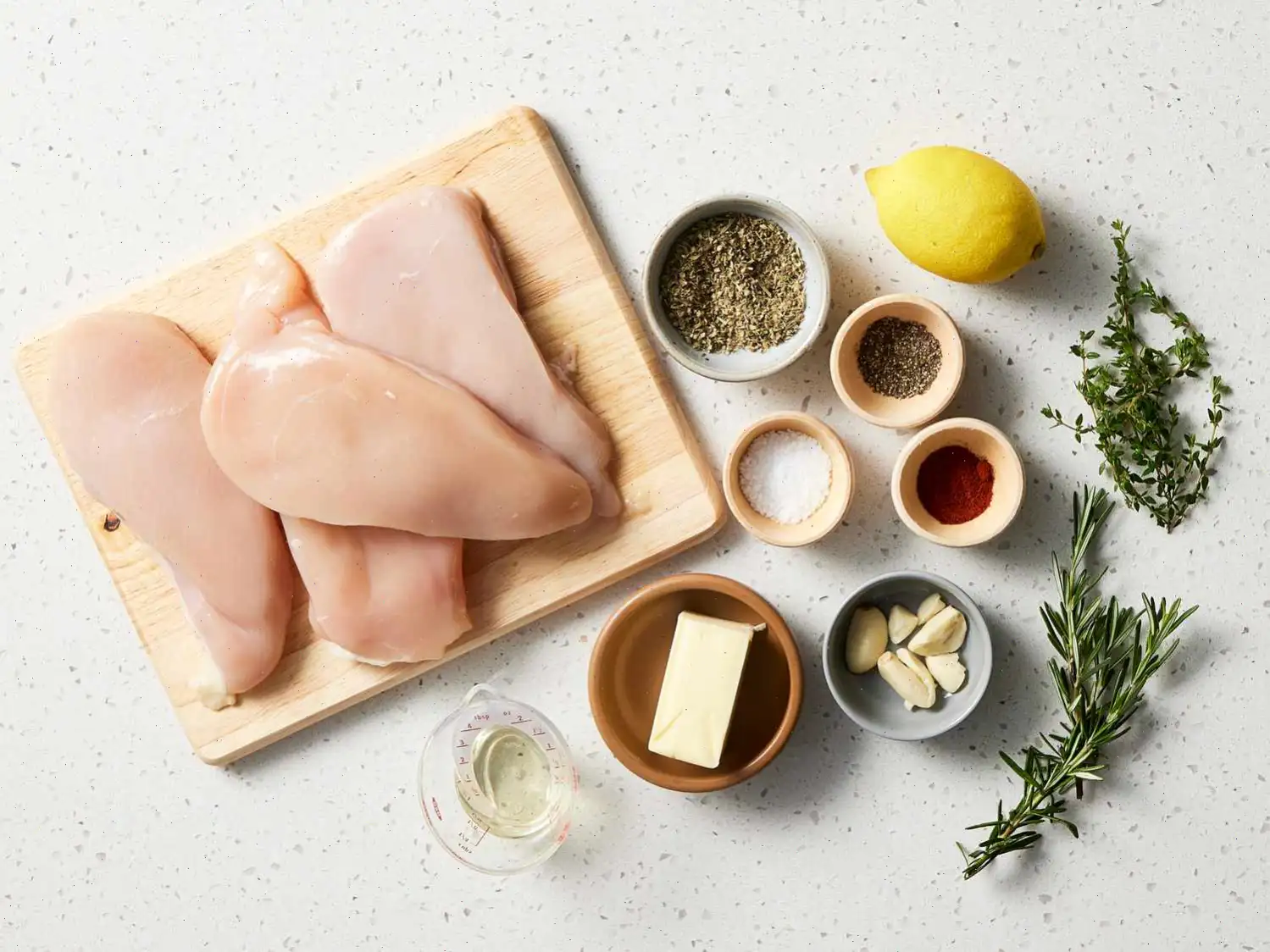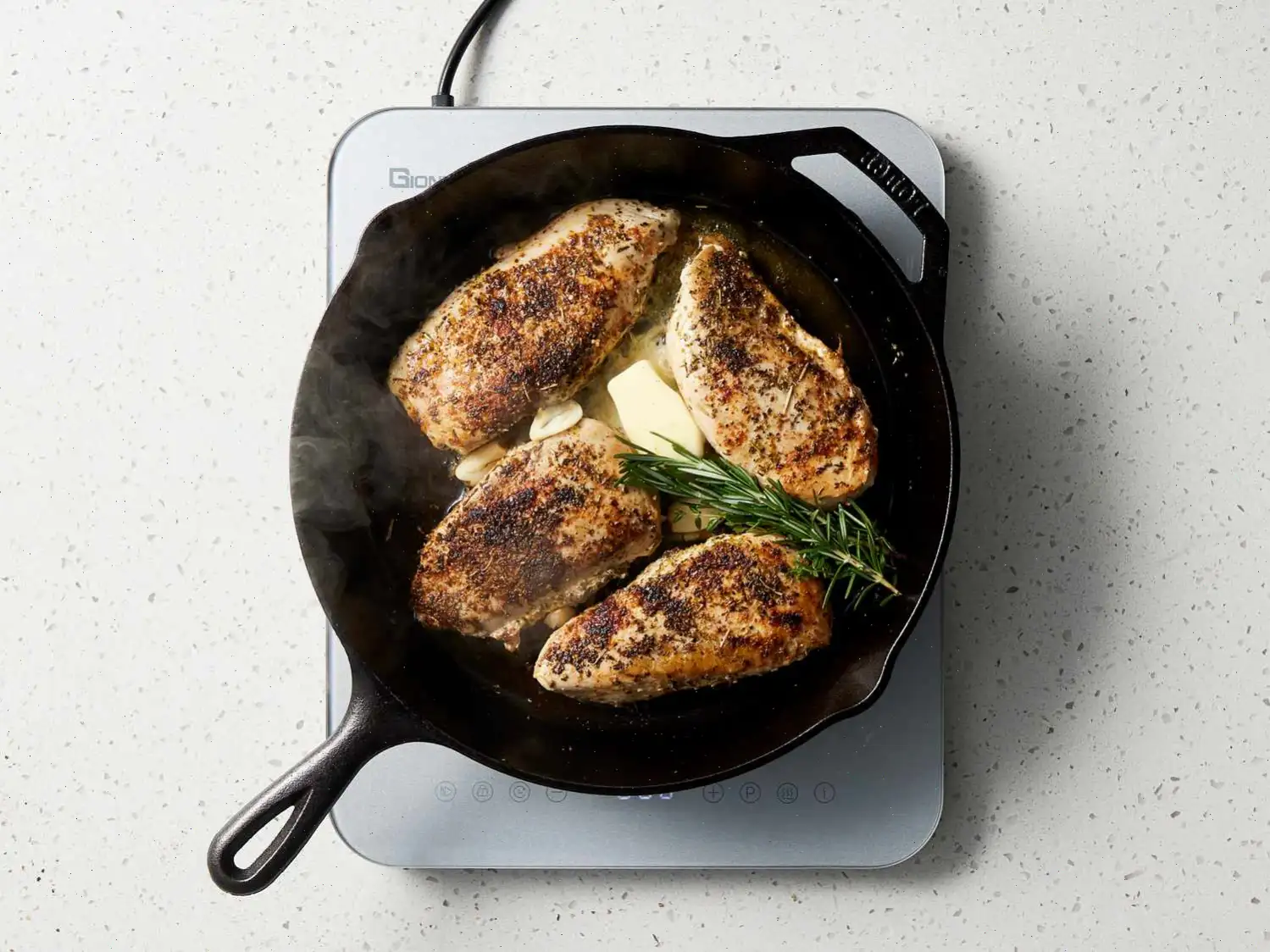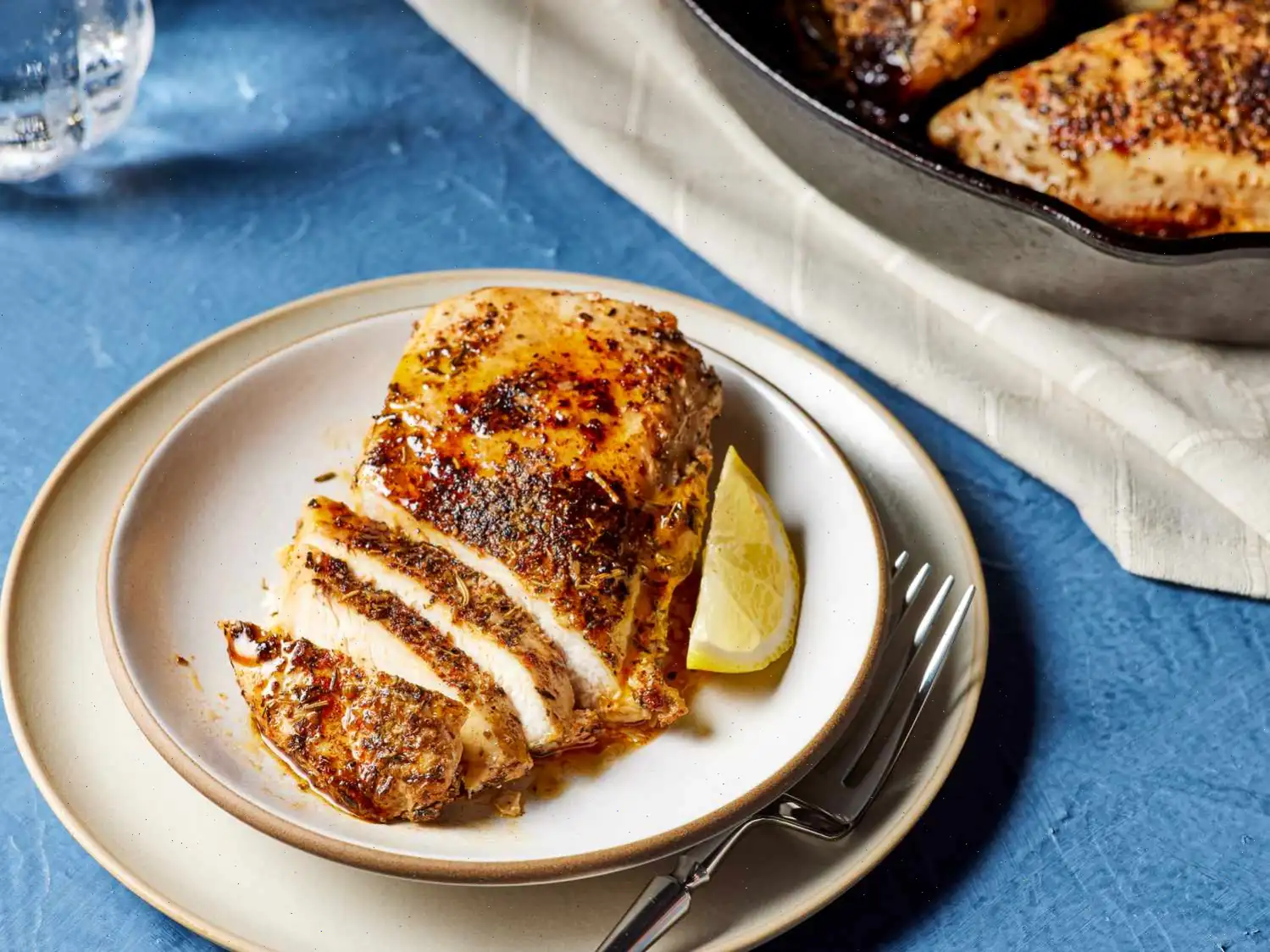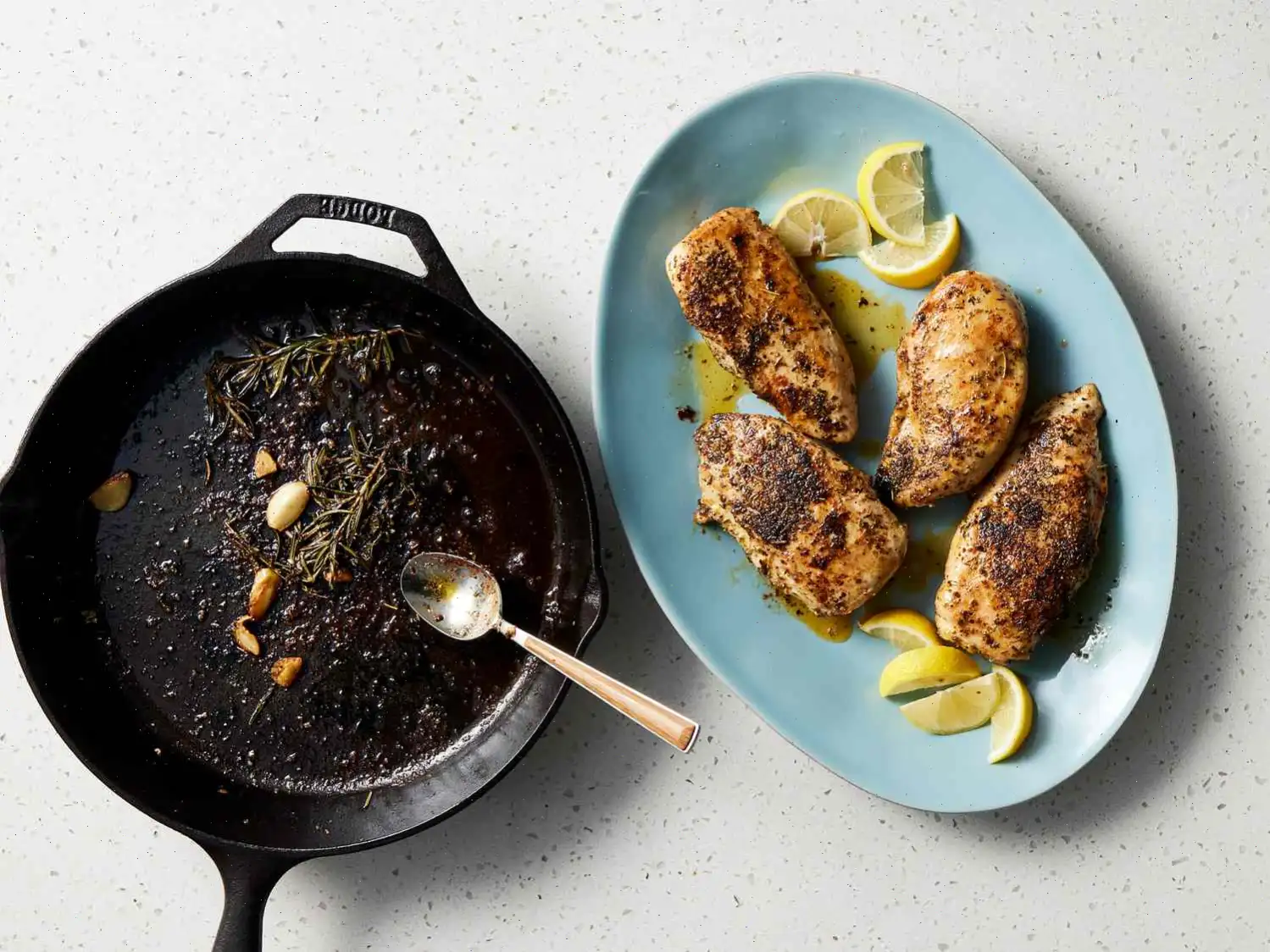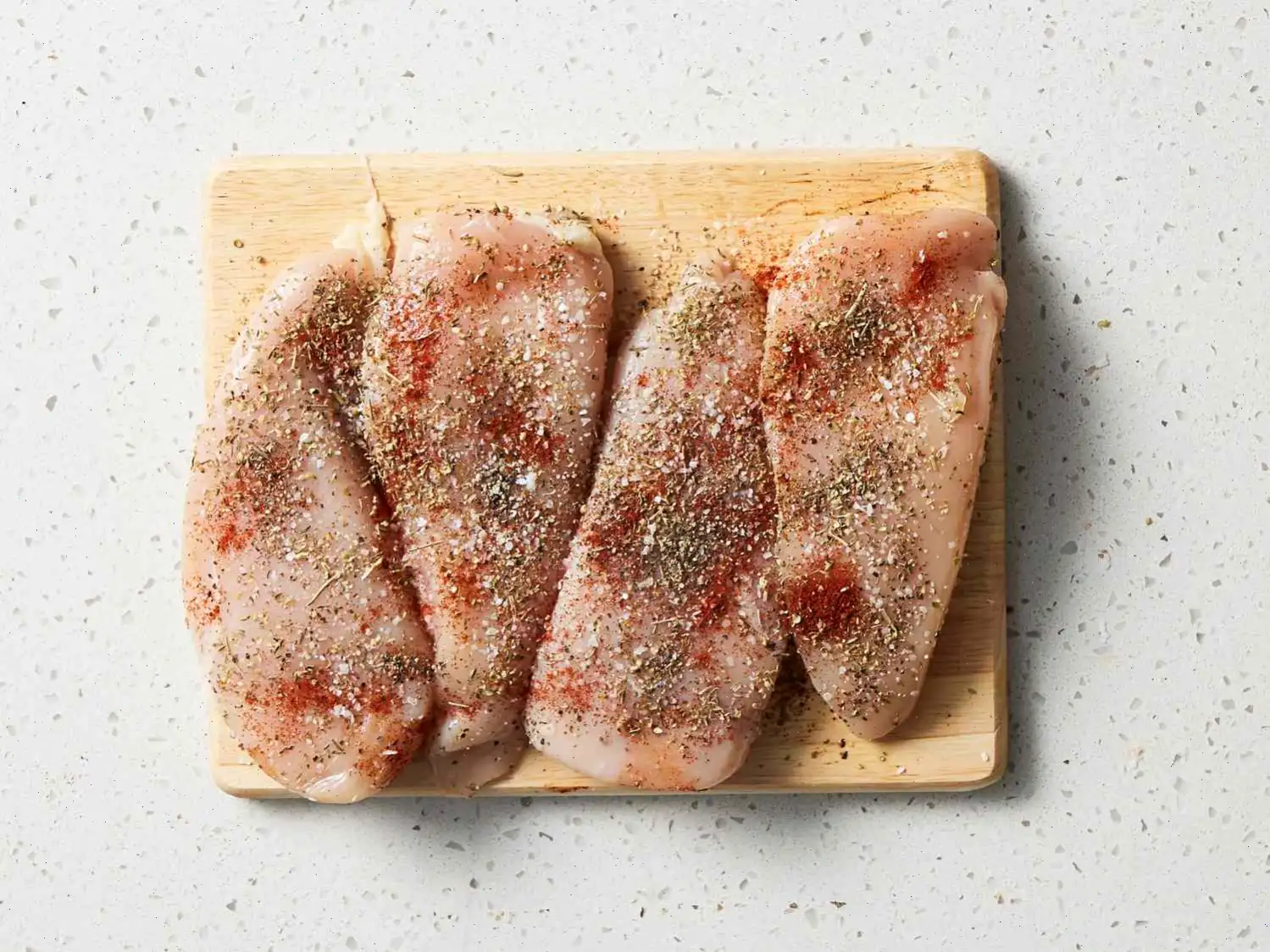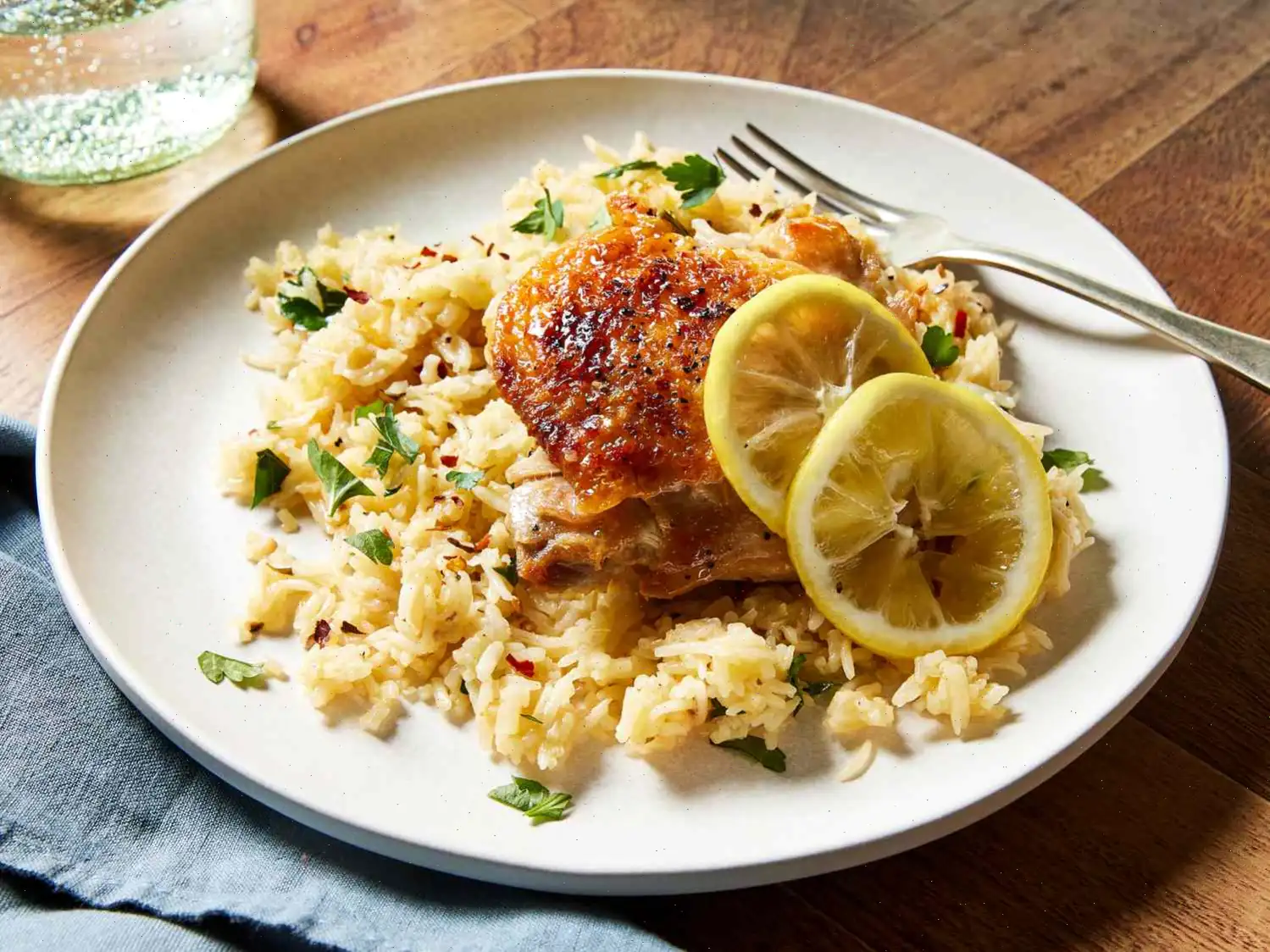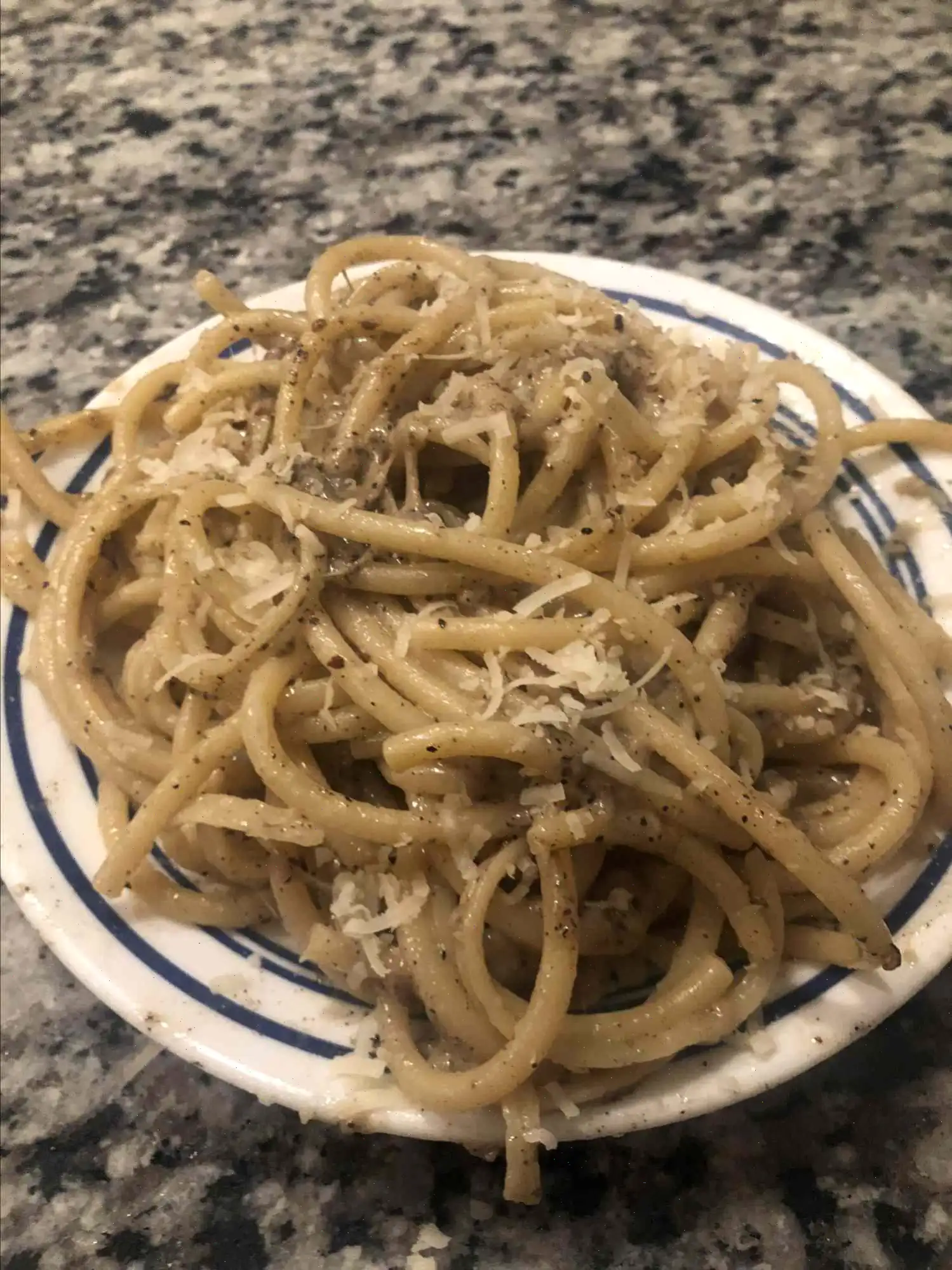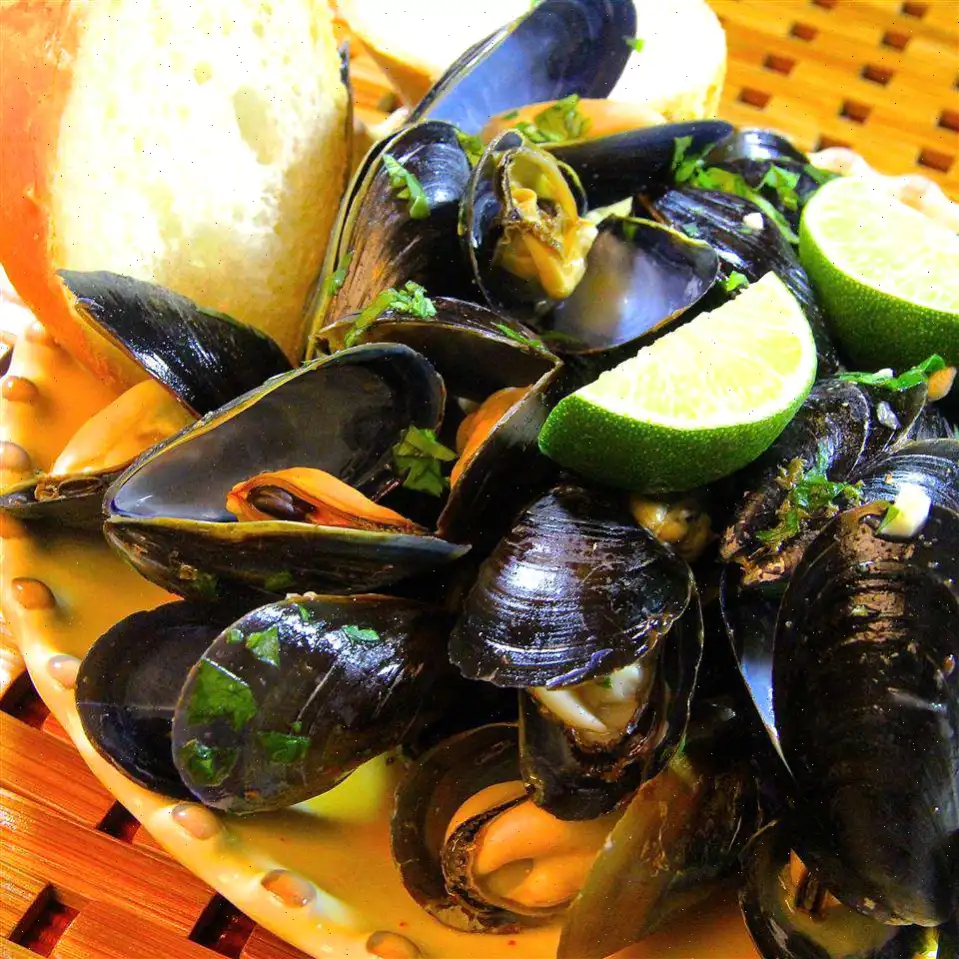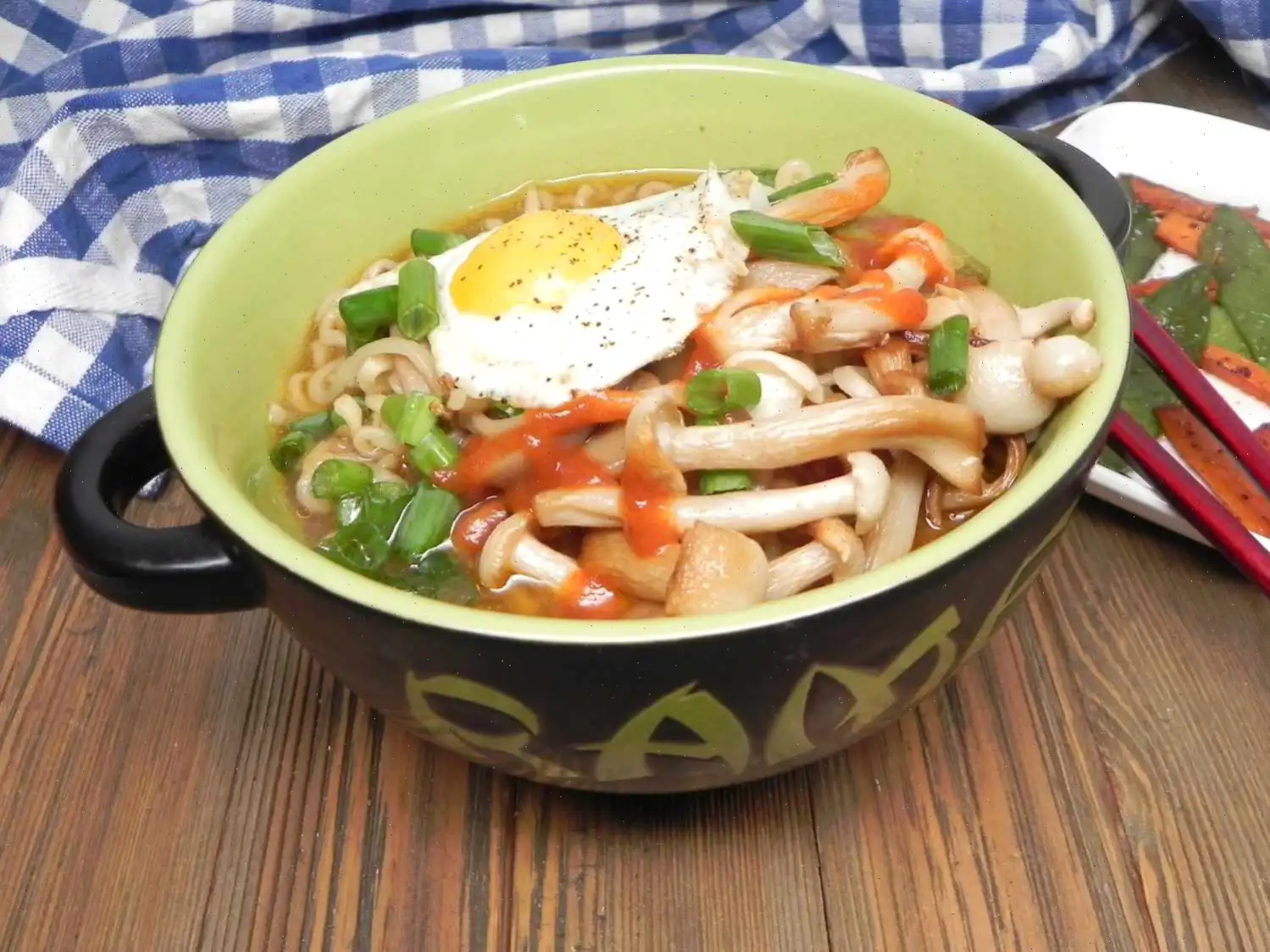
Perfect Cast Iron Skillet Chicken Breasts Recipe
This simple and flavorful recipe for Herb Butter Chicken Breast will become a family favorite. Perfectly seasoned chicken breasts are seared to golden perfection and then topped with a delicious, aromatic herb butter. The result is a juicy, tender chicken thats ready in under 30 minutes.
Ingredients
- 4 (6-ounce) skinless boneless chicken breasts
- 1 tablespoon dried Italian seasoning
- 1 1/2 teaspoons kosher salt
- 1/2 teaspoon smoked paprika
- 1/2 teaspoon freshly ground black pepper
- 2 tablespoons canola oil
- 1/4 cup unsalted butter
- 3 cloves garlic, peeled and smashed
- 4 thyme sprigs
- 2 rosemary sprigs
- Lemon wedges, for serving (optional)
Directions
Step 1: Gather all ingredients and set them out for easy access.
Step 2: Season the chicken breasts evenly with Italian seasoning, salt, smoked paprika, and black pepper.
Step 3: Heat the canola oil in a large cast-iron skillet over medium heat. Once the oil is shimmering, place the chicken breasts in the pan, rounded side down.
Step 4: Cook the chicken, undisturbed, for 4 to 5 minutes until the bottom side is browned. Flip the chicken and continue cooking the other side for another 4 to 5 minutes, undisturbed, until browned.
Step 5: Add the butter, garlic, thyme, and rosemary to the pan. Allow the butter to melt, cooking for about 1 minute.
Step 6: Carefully tilt the skillet towards you so the butter pools at the bottom. Using a spoon, baste the chicken with the melted herb butter for 3 to 5 minutes, or until a thermometer inserted into the thickest part of the chicken reads 165F (74C).
Step 7: Transfer the chicken to a serving platter and let it rest for 5 minutes to allow the juices to redistribute.
Step 8: Serve the chicken with the pan drippings and lemon wedges on the side, if desired.
Cooks Note
A good rule of thumb for seasoning chicken breasts is 1 teaspoon of seasoning per pound of chicken.
Nutrition Facts (Per Serving)
- Calories: 451
- Total Fat: 25g (32% Daily Value)
- Saturated Fat: 9g (47% Daily Value)
- Cholesterol: 175mg (58% Daily Value)
- Sodium: 600mg (26% Daily Value)
- Total Carbohydrate: 2g (1% Daily Value)
- Dietary Fiber: 1g (2% Daily Value)
- Protein: 53g (106% Daily Value)
- Vitamin C: 2mg (3% Daily Value)
- Calcium: 51mg (4% Daily Value)
- Iron: 2mg (14% Daily Value)
- Potassium: 477mg (10% Daily Value)
Note: Percent Daily Values are based on a 2,000 calorie diet. Your daily values may be higher or lower depending on your calorie needs. Nutrient information is based on available data, and some ingredients may not have full nutritional information.

The Story Behind Cast Iron Skillet Chicken Breasts
The cast iron skillet has a long and storied history, dating back to the early 18th century in America, where it became a kitchen staple for its durability and even heat distribution. Cooking chicken breasts in a cast iron skillet emerged as a method to achieve a perfectly seared exterior while keeping the meat tender and juicy. This technique gained popularity in home kitchens across the United States, particularly as a reliable way to cook poultry without the risk of drying it out.
Regional Variations and Local Twists
While the base method is universal, regional adaptations often influence the flavor profile. In the American South, chefs may add a touch of cayenne or smoked paprika to enhance the smoky flavor, while coastal regions might incorporate fresh herbs such as thyme or rosemary from local gardens. In some Midwestern homes, butter and garlic are favored over oil to create a richer, more indulgent taste. These subtle regional touches make each version unique without straying from the essential skillet method.
How It Differs from Similar Dishes
Unlike baked or poached chicken breasts, skillet-cooked chicken offers a crispy, caramelized crust that locks in moisture. Compared to stir-fried or grilled chicken, the skillet technique allows for controlled, even cooking with the added benefit of basting in butter and herbs. This combination of direct heat and aromatic fat creates layers of flavor that are difficult to achieve with other methods, making it a standout choice for weeknight dinners or special occasions.
Where Its Commonly Served
Cast iron skillet chicken breasts are versatile and can appear in both casual and formal settings. At home, its often served with roasted vegetables, mashed potatoes, or a simple salad. In restaurants, it may be presented as part of a hearty entre, accompanied by pan sauces, seasonal vegetables, or grain-based sides. The method is popular in bistros, American-style diners, and modern farm-to-table establishments, appreciated for its reliable results and visually appealing presentation.
Interesting Facts and Culinary Tips
- Cast iron skillets, when properly seasoned, can become naturally nonstick, which helps prevent chicken from sticking and tearing during cooking.
- The addition of fresh herbs and butter at the end of cooking is a technique borrowed from French cuisine called arroser, which involves spooning melted fat over meat to enhance flavor and texture.
- This cooking method ensures that even thicker chicken breasts cook evenly, reducing the risk of overcooked edges or undercooked centers.
- Leftover skillet chicken works beautifully in sandwiches, salads, or wraps, making it a practical choice for meal prep.
- Using a cast iron skillet can slightly raise the iron content in food, adding a subtle nutritional benefit.
Overall, the cast iron skillet chicken breast is a timeless dish that combines practicality, flavor, and versatility. Its ability to deliver consistently juicy chicken with minimal effort has cemented its place in kitchens around the world.
You can listen to this recipe in AI audio format. Simply click the play button below to listen to the content in a format that suits you best. It’s a great way to absorb information on the go!
FAQ about Perfect Cast Iron Skillet Chicken Breasts Recipe
Comments
nicolekrystyn
10/06/2025 01:52:54 PM
This is an easy recipe to follow, and the chicken turned out flavorful and moist. One of the breasts was much thicker than the others so it took longer for that one to reach temperature and the butter and garlic started to brown too much, so next time I would cut or pound chicken to all the same thickness. I really enjoyed the flavors of the herbs with the butter. And leftover chicken made for perfect sandwiches the next day.
vanphilly
10/17/2024 12:07:29 AM
I believe this is a good recipe. I didn't have the sprigs of thyme and rosemary, but had dried versions so added enough to get the taste. I also had one breast (3/4lb), this was half the weight of original recipe. So I adjusted. The taste was good and probably better if I had the sprigs. I enjoyed this greatly.
Patricia L McDonald Schultz
04/21/2025 01:50:58 PM
I used bacon grease because butter burns so fast and bacon grease adds such a great flavor. Absolutely delicious!
Katherine Anderson
03/15/2025 01:02:53 PM
Loved how versatile this recipe is.


